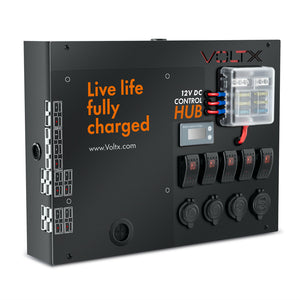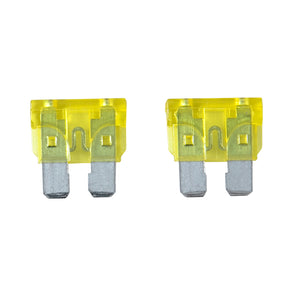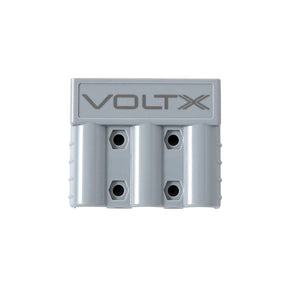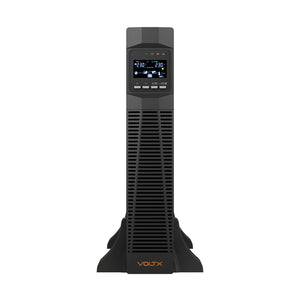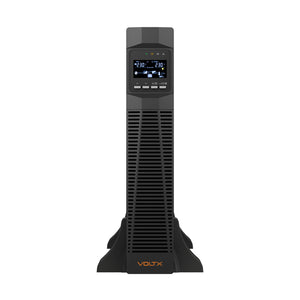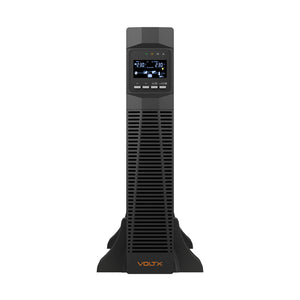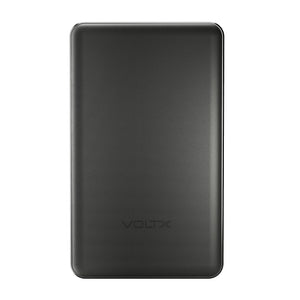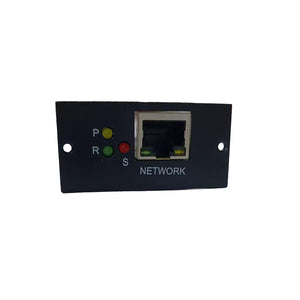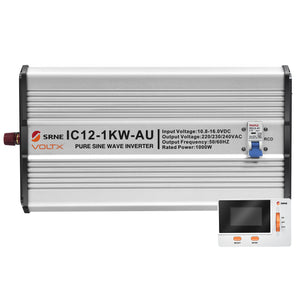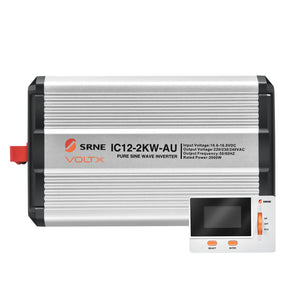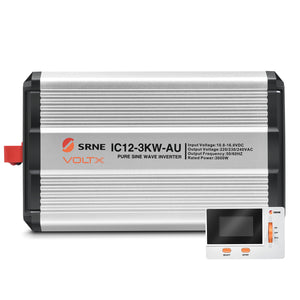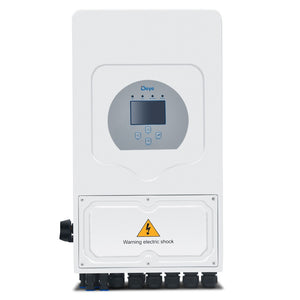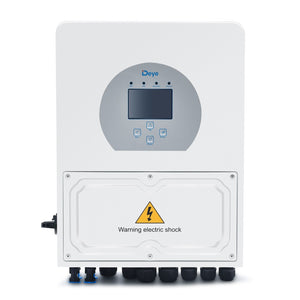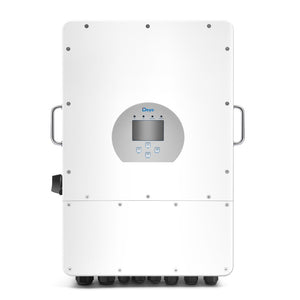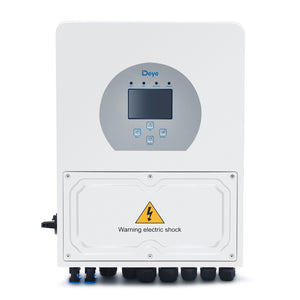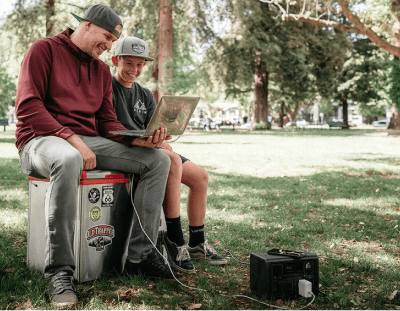VoltX 12V Control Box 2 USB LED Lights Portable Inbuilt Voltmeter Caravan
$249.00Unit price /UnavailableVoltX 12V Control Box LED Lights Portable Inbuilt Voltmeter Caravan
$399.00Unit price /UnavailableUPS Network Expansion Card Compatible with 1-3KVA UPS Remote Monitoring SNMP
$299.00Unit price /UnavailableLow stockVoltX 12V 1KW Pure Sine Wave Inverter + FREE VoltX Inverter LCD Display
$499.00Unit price /UnavailableVoltX 12V 2KW Pure Sine Wave Inverter + FREE VoltX Inverter LCD Display
$599.00Unit price /UnavailableVoltX 12V 3KW Pure Sine Wave Inverter + FREE VoltX Inverter LCD Display
$869.00Unit price /UnavailableDeye 48V 8KW Hybrid Solar Inverter MPPT Charger Regulator Low Voltage
$3,899.00Unit price /UnavailableDeye 48V 5KW Hybrid Solar Inverter MPPT Charger Regulator Low Voltage
$2,199.00Unit price /UnavailableVery low stockDeye 48V 10KW Hybrid Solar Inverter MPPT Charger Regulator Low Voltage
$6,399.00Unit price /UnavailableVery low stockDeye 48V 6KW Hybrid Solar Inverter MPPT Charger Regulator Low Voltage
$2,499.00Unit price /UnavailableVery low stock
Finding the Right Power Solutions for 2025
In the last year, thousands of Australians searched for terms like 'power bank' and 'power station', yet many struggled to find the right information, leading to near-zero clicks on relevant results – this shows a huge need for clear, practical advice about power solutions. Whether you're planning weekend camping trips along the Queensland coast or ensuring your home office never loses power during storm season, finding the perfect power backup for home use has become essential in 2025. From portable power station options that keep your caravan running smoothly to off grid power solutions for remote adventures, we've compiled this comprehensive resource to help you navigate the increasingly complex world of modern power technology. Understanding what is the best portable power station for your specific needs doesn't have to be overwhelming – with the right information and trusted products from Outbax, you'll find exactly what you need to stay powered up wherever life takes you.
The Great Outdoors Must-Have: Camping Power Solutions
Modern camping power solutions have revolutionised how Australians experience the great outdoors, transforming everything from weekend getaways to extended 4x4 expeditions across the outback. A quality 12V control box goes far beyond being just a simple battery – it's an integrated power management system that brings the convenience of home to your campsite, featuring everything from multiple USB ports for charging devices to Anderson plugs for running fridges and LED lights with built-in voltmeters for monitoring battery levels. The VoltX range exemplifies this evolution with two standout models: their standard control box which offers 2x USB ports (2.1A & 1A) and 2x 50A Anderson plugs, perfect for weekend warriors powering essential gear, and the premium model with 2x 2.4A USB ports, Quick Charge 3.0, 18W USB-C PD, and 5x 50A Anderson plugs plus a 3-pin outlet, ideal for power users running drones, laptops, and modern devices simultaneously.
Whether you're setting up at popular coastal caravan parks or venturing into remote outback tracks, these portable power packs ensure your camping battery setup can handle everything from keeping the portable fridge cold to charging phones while the camp lights illuminate your evening, making them essential for any serious outdoor adventure. The versatility of a dedicated power box for camping means you're never caught without power, and with features like integrated circuit protection and weatherproof construction, these portable power stations for camping units are built to handle Australian conditions while answering the crucial question of how to get power while camping without compromising on safety or convenience.
Keeping the Lights On: The Best Uninterruptible Power Supply Systems
An uninterrupted power supply (UPS) acts as your electronic guardian angel, providing instant emergency power to your devices the moment mains electricity cuts out – a critical safeguard for Australian homes and offices increasingly reliant on sensitive digital equipment. The primary value of a UPS system extends beyond simple power backup for home use; it prevents catastrophic data loss on computers during sudden outages, protects expensive electronics from damaging power surges common during storms, and keeps essential devices like modems and routers operational so you can maintain connectivity when you need it most.
What sets Outbax's VoltX UPS range apart is its advanced LiFePO4 battery backup technology. This is a significant upgrade from traditional lead-acid batteries, delivering up to 10 years of reliable service life, enhanced thermal stability that virtually eliminates overheating risks, and superior efficiency with faster recharge times and more consistent power delivery. Whether you need a 1000W unit to safeguard your home office setup or a robust 3000W system for more demanding applications, these modern battery backup solutions offer features like remote monitoring via network cards, allowing you to track power status from anywhere while ensuring your sensitive equipment remains protected from the voltage fluctuations and surges that can destroy unprotected electronics in milliseconds.
Clean Energy for Sensitive Gear: A Look at Pure Sine Wave Inverters
A pure sine wave inverter serves as the crucial bridge between your 12V battery system and the 240V AC power your household appliances expect. However, unlike basic inverters that produce choppy, modified sine wave output, these sophisticated power inverters deliver clean, smooth electricity identical to what flows from your wall socket at home. This distinction becomes critical when powering sensitive electronics – while a modified sine wave might seem adequate on paper, it can cause everything from annoying buzzing in audio equipment to potential damage in devices with delicate circuitry, making pure sine wave essential for laptops, CPAP machines, modern TVs, and any appliances with motors like fridges or power tools.
The VoltX inverter range demonstrates this perfectly with their 1KW, 2KW, and 3KW models. Its 1KW unit comfortably powers a laptop and small TV simultaneously, the 2KW ones handle most household appliances, including microwaves and power tools, while the 3KW options can run multiple major appliances, making them ideal for off-grid living or comprehensive backup power solutions. Each model includes a free LCD display for real-time monitoring of power consumption and battery status, ensuring you always know exactly how your DC to AC conversion is performing while powering home appliances safely and efficiently.
Power in Your Pocket: Choosing the Best Portable Charger
The ubiquitous power bank has become an essential daily carry item, yet choosing the right portable charger requires understanding two critical specifications that directly impact your mobile power solutions. Capacity, measured in milliamp-hours (mAh), determines how much charge you're carrying – the VoltX 5000mAh model offers a slim, lightweight profile perfect for emergency top-ups that'll fully charge most phones once, while the 10000mAh version provides multiple phone charges or enough juice to power a tablet, making it ideal for long days away from power outlets.
Equally important is charging speed, where features like fast charging power bank capabilities and Type-C connectivity can slash recharge times from hours to minutes, with modern quick-charge protocols ensuring your devices get back to full power rapidly without compromising battery health. These compact and efficient solutions represent the evolution of power bank portable charger technology, delivering reliable power in packages small enough to slip into any pocket or bag. They have also evolved as a must-have, whether you're navigating city streets or exploring remote trails where the best power bank becomes your lifeline to staying connected.
Final Thoughts on Your Power Needs
Selecting the ideal power solutions ultimately depends on understanding your specific requirements and matching them with the right technology for your situation. For outdoor enthusiasts, investing in a quality 12V control box transforms camping from roughing it to comfortable adventure, while homeowners and business operators find long-term value in LiFePO4 UPS systems that protect valuable electronics and data for years to come.
Those venturing off-grid or needing to run sensitive appliances from battery power will find a pure sine wave inverter non-negotiable for safe, reliable operation, and for everyday urban life, a fast-charging power bank ensures you're never caught with a dead phone at crucial moments. By carefully assessing your power needs and choosing the right combination of these technologies from Outbax's comprehensive range, you're making an investment in reliability, convenience, and peace of mind that pays dividends every time the power goes out or you venture beyond the reach of mains electricity.
Frequently Asked Questions
-
What is the best portable power station for camping?
The best portable power station depends entirely on your camping needs and style. For weekend trips with basic requirements, a portable power box featuring USB ports, 12V sockets, and an inbuilt voltmeter provides excellent value and simplicity. However, if you need to run larger appliances like microwaves or power tools, you'll want a more substantial power station paired with a pure sine wave inverter. Key features to prioritise include multiple charging ports for simultaneous device charging, a robust build quality to handle outdoor conditions, and monitoring capabilities so you always know your remaining power levels.
-
Can a UPS be used as a generator?
While both provide backup power, a UPS and a generator serve different purposes. A UPS delivers instant, short-term power designed to protect electronics during outages and allow safe shutdown procedures, typically running for 15-30 minutes depending on load. Generators provide extended power for hours or days but take time to start up. Some larger UPS systems with LiFePO4 batteries can serve as a reliable alternative to small camping generators for shorter periods, offering silent, fume-free operation that's perfect for overnight use or noise-restricted areas.
-
What is the difference between a power bank and a power station?
Power banks are compact, portable devices designed specifically for charging small electronics like phones and tablets via USB, typically ranging from 5,000 to 20,000mAh capacity. Power stations are substantially larger units with capacities measured in watt-hours, featuring multiple output types including 12V sockets, USB ports, and often 240V AC outlets through built-in inverters. While a power bank fits in your pocket for daily carry, a power station can run everything from portable fridges to power tools, making it essential for camping or emergency backup applications.
-
How do I know what size inverter I need?
Determining correct inverter size requires checking the wattage requirements of all appliances you plan to run, which you'll find on their specification labels. Add up the total wattage of devices you'll use simultaneously, then select an inverter with a continuous power rating at least 20% higher than this total to ensure reliable operation. Remember that some appliances have surge requirements when starting up that can be 2-3 times their running wattage, particularly items with motors like fridges or power tools.
-
What is a LiFePO4 battery, and why is it better for a UPS?
LiFePO4 (Lithium Iron Phosphate) represents the latest evolution in battery technology, offering significant advantages over traditional lead-acid batteries in UPS applications. These batteries deliver 10+ years of service life compared to 3-5 years for lead-acid, maintain stable performance across thousands of charge cycles, and feature superior thermal stability that virtually eliminates fire risk. They're also more efficient, charging faster and delivering more consistent power output, making them ideal for protecting sensitive electronics despite their higher initial cost.
-
Are there battery powered generators?
Yes, battery powered generators – more commonly called portable power stations – use large internal lithium-ion or LiFePO4 batteries combined with inverters to provide AC power output. These units offer silent, emission-free operation that's perfect for camping, indoor use, or noise-sensitive environments. Unlike traditional petrol generators, they require no fuel, produce no fumes, and can be safely used inside tents or vehicles, though they typically offer shorter runtimes and require access to mains power or solar panels for recharging.
-
What is a hybrid solar inverter?
A hybrid solar inverter serves as the intelligent heart of modern solar power systems, managing energy flow between solar panels, battery storage, and the electrical grid. This all-in-one device can simultaneously convert DC solar power to AC for home use, charge battery banks for night-time operation, and seamlessly switch to grid power when needed. During outages, it automatically disconnects from the grid and powers your home from batteries, maximising energy independence while ensuring you always have reliable power regardless of weather or grid conditions.
-
Do I need a fuse for my 12V setup?
Absolutely – fuses are non-negotiable safety components in any 12V electrical system. These inexpensive devices protect your valuable equipment from costly damage and prevent potentially catastrophic electrical fires by automatically breaking the circuit if current exceeds safe levels due to shorts or equipment failure. Always use appropriately rated fuses for each circuit (never exceed manufacturer specifications), position them as close to the battery as possible, and carry spares for quick replacement when needed.
-
What can a 1000W inverter power?
A 1000W (1KW) pure sine wave inverter comfortably handles most small to medium household appliances and electronics. You can reliably run laptops (50-100W), LED TVs up to 50" (80-150W), small bar fridges (100-200W), power tools like drills or sanders (300-800W), and multiple device chargers simultaneously. However, always verify actual power consumption on appliance labels and remember that some devices require surge capacity during startup, so avoid running multiple high-draw items simultaneously to prevent overload.
-
How can I get power while camping off-grid?
Off-grid camping power typically centres on a deep cycle battery system paired with either a 12V control box or portable power station for distribution. Charge your battery while driving using a DC-DC charger that optimises power transfer from your vehicle's alternator, or deploy portable solar panels for sustainable charging at camp. This setup powers essential items like LED lights, portable fridges, and device chargers for days without mains access, with capacity depending on your battery size and consumption patterns – most campers find a 100-120Ah battery sufficient for weekend trips.
Frequently Asked Questions
- What is the best portable power station for camping?
- Can a UPS be used as a generator?
- What is the difference between a power bank and a power station?
- How do I know what size inverter I need?
- Are there battery powered generators?
- What is a hybrid solar inverter?
- Do I need a fuse for my 12V setup?
- What can a 1000W inverter power?
- How can I get power while camping off-grid?

